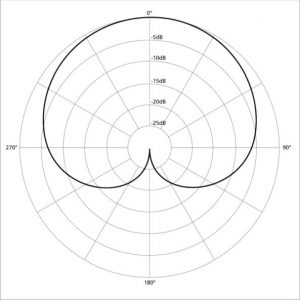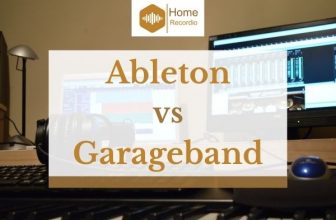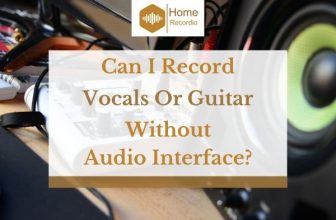Supercardioid vs Cardioid Mics – What is The Difference?
There are sorts of different reasons for producing digital recordings: music, podcasts, live-streaming, vlogging.
Anyone interested in such activities (though of course this is not an exhaustive list) will have to make a decision about what type of microphone is right for them. One thing to keep in mind when coming to such a conclusion is the pattern of the ‘pickup’ in the mic.
This pattern will determine the directions from which sound is picked up, and thus what sound appears on your recording.
There is a lot of debate about which is the best one, and for which purpose. But we’ve honed in on one set of differences in particular: the supercardioid vs cardioid mic debate.
Table of Contents
What are Supercardioid Mics?

A quick etymology lesson: the word ‘cardioid’ derives its name from the Greek for heart, kardia, and the Greek word for form, eidos.
As you could thus predict, microphones with ‘cardioid’ in their name pick up sound from an area that looks something like a heart. (This is not necessarily the only area from which the pick-up sound, hence the use of prefixes in microphone naming systems.)
The mic’s position will mark the meeting point of the two apexes of the heart, the two bumps at the top.
This means that the mic will thus mainly pick up noise from the semi-circle area in front and to the side of it. The mic will also be able to pick up noise from behind, but only at a much closer range.
The size of this heart-shaped pick-up area will depend on how sensitive your mic is set up to be.
A supercardioid mic not only picks up noise from this heart-shaped range, but also from directly behind the microphone too.
It has another area in which it can pick up sound. This area is tear-drop shaped, and emerges backwards from the point which marks the mic’s position.
This area is much smaller than the heart-shaped pick up range in front of and to the side of the mic.
What are Cardioid Mics?

Shorn of their prefix, a simple cardioid mic will pick up sound from the heart shaped range that has been elucidated above.
This is not to say that no sound will be picked up from behind the mic, just that the range is a lot smaller, and a lot less specific.
In fact, it is very hard to enjoy the full selectivity of the cardioid mic unless you are in a controlled environment, like a sound-proofed room in a recording studio.
Supercardioid vs Cardioid Mics
We can basically just understand the supercardioid mic as the cardioid mic’s son or daughter: the former shares the same basic features as the latter, but develops them significantly.
Both mics pick up the sound that occurs at the side and the front of them in the same way. Compared to the cardioid mic, the supercardioid will pick up more noise from directly behind it, and from a more specific area.
[amazon box=”B000N94RP2″]Cardioid mics are generally thought of as all-rounders: it’s a highly flexible pattern, making it really common in most entry-level mics.
They are great for projects in which you do not want any operating noise to be recorded: when you want to exclude the sound of your computer fans when live-streaming, or the sound of your breathing whilst you document a friend’s wedding.
[amazon box=”B01E0MGY4Y”]Supercardioid mics are good for isolate recording a single source, but when a larger margin of error (compared to the cardioid) is required.
These mics are great for scripted content, or the recording of an individual instrument in a live recording. Boasting greater vocal sensitivity you will often find them in boom mics in TV recording set-ups.
Conclusion
There we have it: a quick dive into the differences between two very popular and useful mics. It is, however, important to bear in mind that there are other types of microphones.
Your understanding of what recording equipment is available to you should not entirely hinge on a supercardioid vs cardioid mic comparison.
However, the differences between the two should elucidate the kind of things you should consider: whether you want a directional mic, how isolated you want your sound, and how versatile you want your recording equipment. Happy recording!




